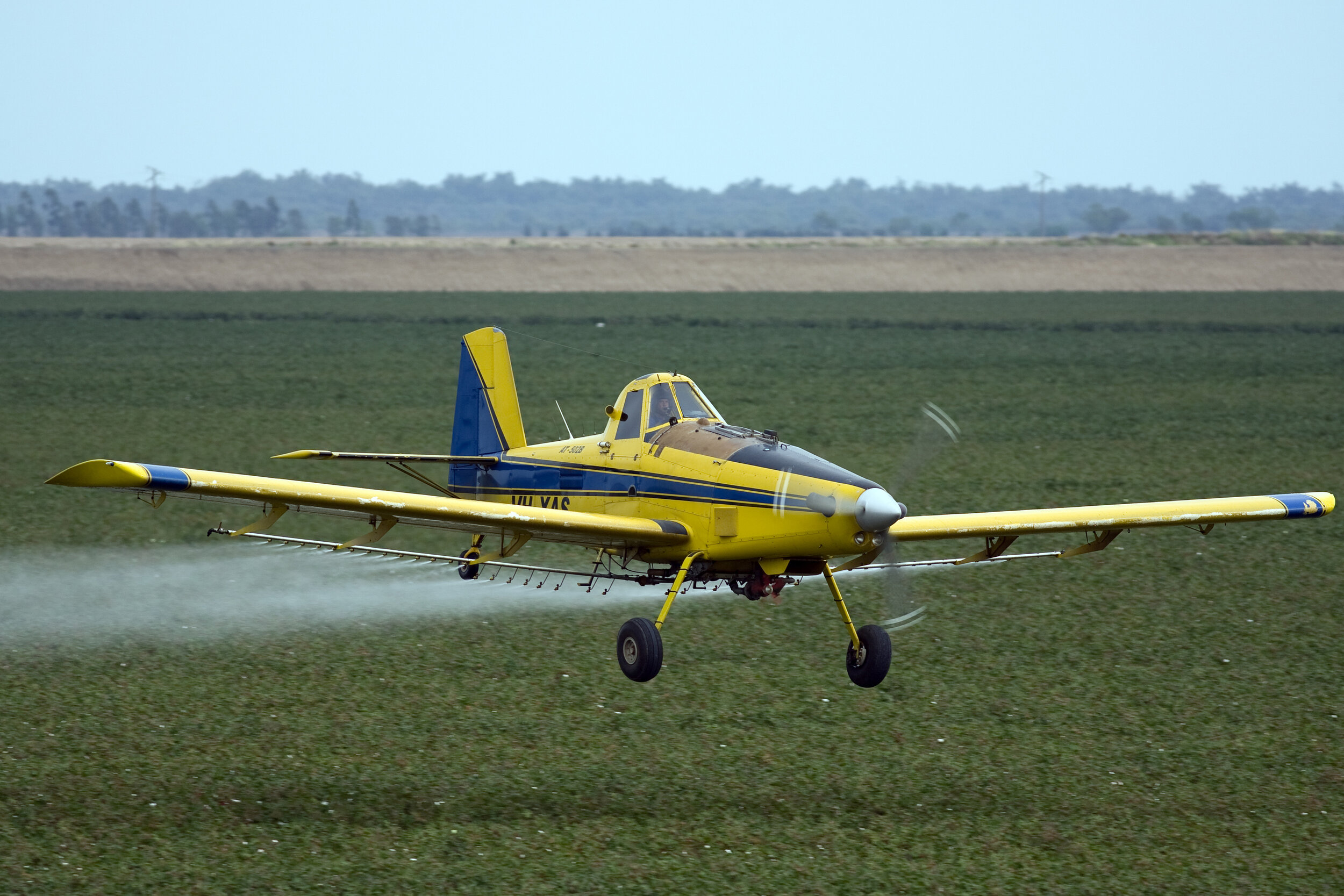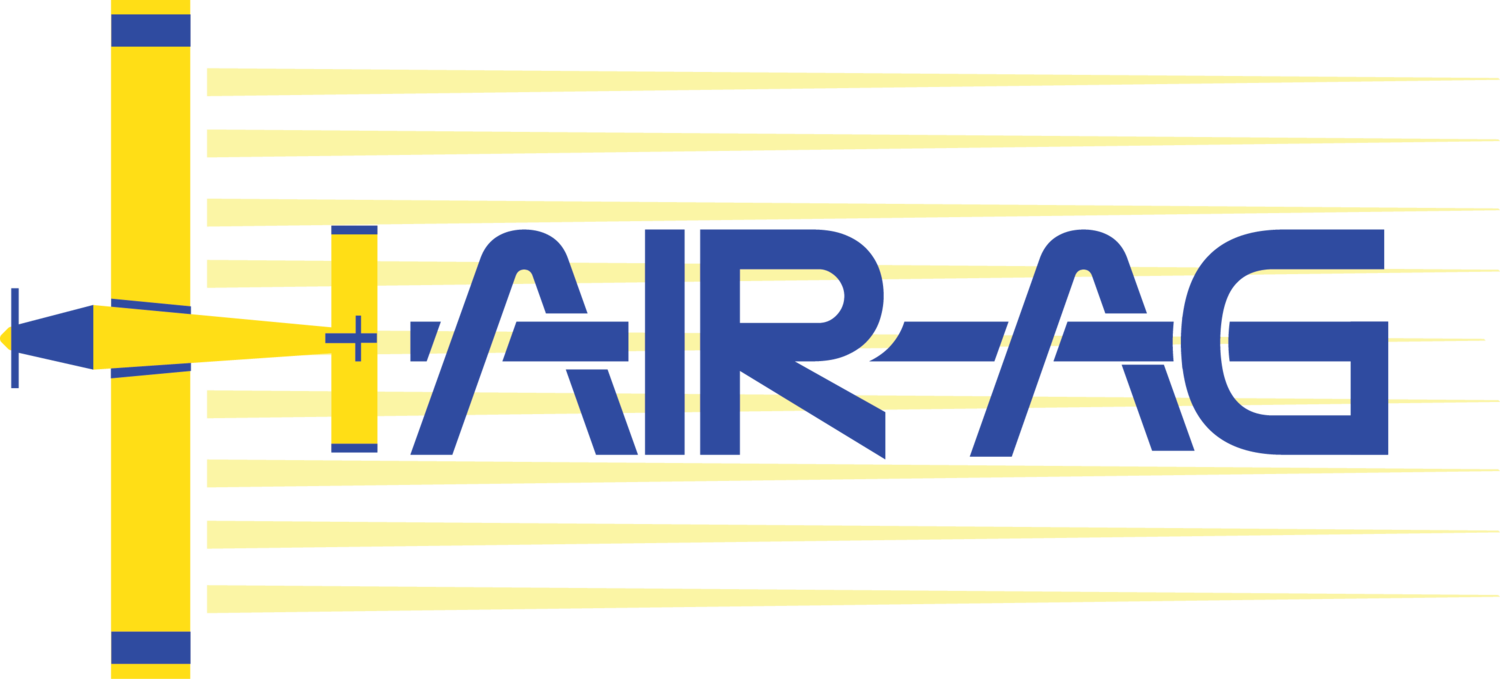
Managing Pesticide Drift
Using aircraft to spray has always carried the impression that they will create spray drift and cause damage to other crops and the environment. It is important to note that all spraying operations, no matter how carefully carried out, with a plane or a ground rig, will cause some off target drift. Yet it is possible to safely carry out spray applications without causing off target damage. Therefore it is important to understand why drift happens and what can be done to minimise it.
Spray nozzles
The issue stems from the fact that we need to break the pesticide into small droplets so that it can be evenly distributed across the target area. We use nozzles to create these drops the same way as ground rigs and other sprayers do. They create droplets by releasing a liquid stream into the airflow. The airflow shatters the stream into droplets of various sizes. The more the nozzle is angled into the airstream the smaller the droplets that are created. The faster the airstream is, the smaller the droplets are created.
The size of the droplet created is very important. The efficacy or effect of the product on the pest will depend on the droplet size. Small droplets will float in the air longer and be moved around by air currents in the crop. Because there are more of them they are more likely to contact small pests and be deposited over the plant more evenly.
Large droplets will fall faster and be less affected by air movements. They are good for penetrating further into the crop canopy and for depositing on the soil surface. Because there are less of them they will not be spread as evenly across the target surface.
The spray boom on Air Ag’s aircraft have a computer that monitors the size of the droplets formed and can change the angle of the slipstream to change the droplet size in flight. The Pilot can dial in the required droplet size for each job to ensure they have the appropriate application effect.
Factors that influence drift
All nozzles by their design create some drops that are smaller than we want. These are the ones that can drift off the target area. This is the same for air and ground machines. The main factors that affect drift are.
Height of spray release from the ground
The higher the droplet is released the more it will be carried before it hits the ground or the target area. Aircraft usually have a release height of 3 to 4 meters above the ground. Ground rigs can be a lot lower than this and therefore drift will be less. However something like an orchard airblast sprayer will shoot the spray upwards which can cause the drops to drift a long distance.
Wind Speed
As the droplets falls to the ground it is carried along with the air mass. The faster the wind speed the further it will go before it hits the ground. A droplet will never move against the wind direction. Therefore you can predict where the drift will go based on the wind direction. If there is no wind at all then you cannot predict where the drift will go. It is very important then to not spray in still conditions. Air Ag will only spray when wind speeds are between 3 and 20kph. Our aircraft have smoke generators on board so that the pilot can always tell which way the wind is blowing and therefore which direction the drift is heading.
Droplet Size
The size of the droplet is the biggest factor in how much off target drift will occur. A small droplet will drift further because it falls slower it will carry further in the air before hitting the ground. A large droplet has more mass and falls faster therefore it will hit the ground more quickly usually before it leaves the intended target area.
Atmospheric conditions
An atmospheric inversion occurs when temperature causes air to rise instead of sink and these air masses may carry spray droplets large distances. They usually occur at night or early mornings. They are usually identified as very still conditions and you can see smoke or dust hovering above the ground. Spraying with any sort of equipment in these conditions is very dangerous.
When the air has very low humidity, small droplets can evaporate to even smaller droplets thus increasing the chance of them drifting away. Even large droplets can quickly decrease in size and drift. It is important not to spray when humidity levels are very low such as on hot summer afternoons. Sometimes the winter westerlies can have quite low humidity levels as well so it pays to check before operating.
How to reduce Drift
Air Ag use the following strategies to reduce drift as much as possible:
Use nozzle types that produce less ‘driftable fines’ as part of their design
Create the largest droplet that will do the job for each application
Use the appropriate spray nozzles that will have a low number of driftable fines.
Only release the spray when the boom height is in the 3-4m range
Only spray when the wind is between 3 – 20 kph
Only spray in suitable atmospheric conditions that avoid inversion conditions and low humidity conditions
Only spray when the wind is blowing away from drift hazard areas
Leaving no spray buffer areas where necessary
